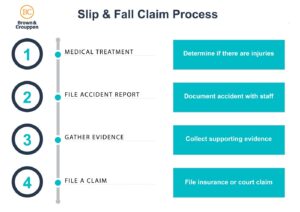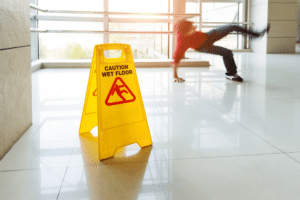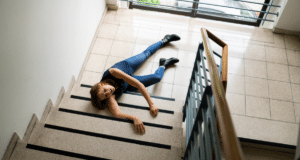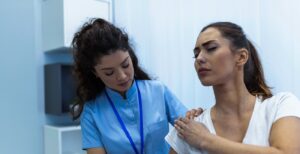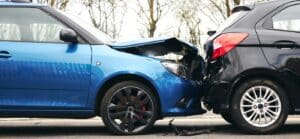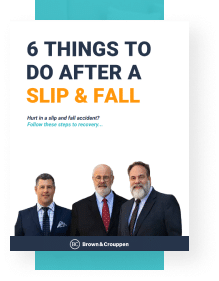
Use our checklist to learn what to do after a fall and understand key legal considerations.
Common Symptoms of Slip & Fall Injuries
Symptoms of a slip and fall are wide and varied. This is because no two falls are exactly alike. Of course, those at highest risk are elderly individuals who have pre-existing balance issues, but a slip and fall can happen to anyone at any time. Your symptoms will develop based on not only how you fell, but also how you landed. Listed below are several common symptoms of slip and fall injuries.
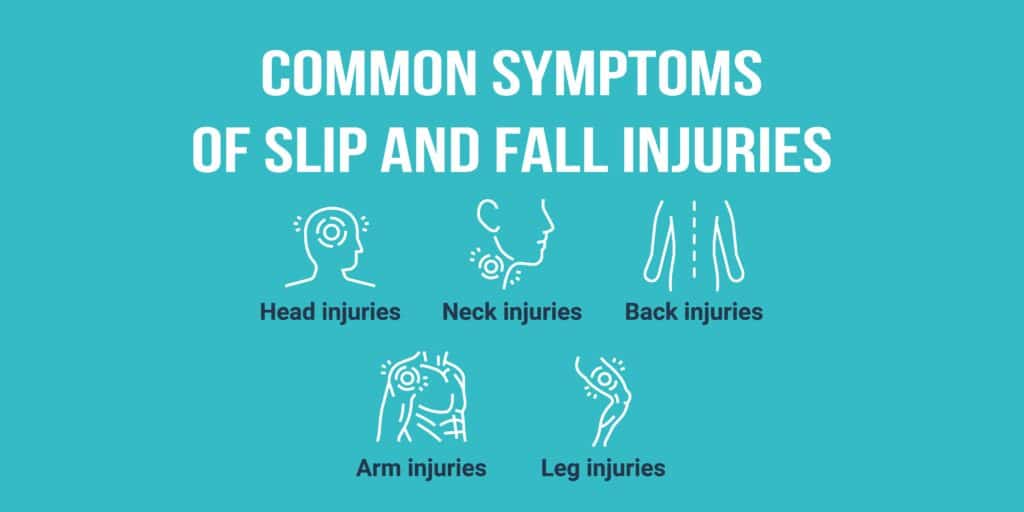
Less severe slip and fall injuries
Bruising: By far the most common injury sustained in slip and fall accidents is bruising. Bruises can be either superficial (noticeable only on the skin) or deep (felt deeper into the muscle). While most bruises are harmless, it is important to understand that bruising will typically look more severe days after the fall rather than immediately. If you are on blood-thinning medication, it is extremely important to monitor for bruising which increases in size, extreme swelling of the area which continuously worsens, increased pain, and dizziness/lightheadedness, all of which are signs of internal bleeding.
Generalized aching/soreness: Also, after a fall, you will likely notice some type of achiness or sore body parts. Often, the symptoms are felt all over the body rather than just the area that made impact with the ground. This is because as we fall, the body will try to compensate for the loss of balance by twisting and turning in uncommon directions. It is important to monitor to make sure that these symptoms start to improve within a few days. Prolonged aching and soreness may indicate a more severe injury and should be evaluated by a physician.
Swelling: Swelling is extremely common following a fall and can either be accompanied by a more severe injury or may present by itself. Once the body is injured, it will send extra fluid to the injury, carrying oxygen, vitamins, and minerals that are required for healing. Typically this will resolve within a week to 10 days. If, however, swelling occurs in conjunction with severe pain (such as injuries that result in pain and suffering), or it becomes worse over the days and not better, it is important to see a doctor to ensure that there is not an underlying condition.
Numbness/tingling: Many individuals that find themselves in a slip and fall accident will experience some type of numbness and tingling. It can occur at the site of the injury or even below. Most often apparent in conjunction with swelling, these symptoms will often resolve once the swelling reduces. If, however, numbness and tingling do not reduce once the swelling is gone, then it is imperative that you seek care with a physician to look for possible nerve involvement.
Headaches: Headaches are common following a slip and fall, especially if you hit your head during the fall. It is also important to know that other injuries may cause headaches as well, specifically injuries to the neck or arms. If the headache does not resolve with rest or over-the-counter medication, evaluation is needed to determine the cause of the headache itself. If ever the headache presents as the “worst headache of your life,” emergency evaluation is needed.
More severe slip and fall injuries
Sprain/strain: Sprains and strains to the hands and/or feet commonly occur following a slip and fall . Sometimes these sprains or strains can be so severe that it feels like a break in the bone. Anytime a sprain or strain is suspected, evaluation by a physician is warranted to ensure a more severe injury is not present. Typically accompanied by swelling, sprains and strains most often require splinting of some sort. This is most easily remembered by the acronym RICE (Rest, Ice, Compression, Elevation).
Broken bones: There are numerous types of breaks that can occur in a slip and fall. Hip fractures are often seen when falling to the side. Other bones commonly broken include the hands and feet, which are supported by numerous tiny bones that are easily damaged. In the case of a suspected broken bone, it is extremely important to have a medical evaluation as soon as possible. Likely, X Rays will be taken to see if the break is aligned correctly (non-displaced). Surgery is usually only required if the bones are not in alignment with each other and would heal crookedly (displaced). It is also important to know that broken bones are not always seen immediately following the injury. Hairline fractures are best diagnosed several days to a week after the injury because of the body’s response to healing. If you have pain that is not resolving, or gets worse with use, seek evaluation by your physician.
Head injury: Head injury is one of the most severe injuries sustained in slip and fall accidents. Most often, these injuries will resolve themselves, but they also have the capacity to prove fatal if not treated. If you hit your head during a fall, it is essential that you seek medical treatment immediately, even if the pain is not severe. Most often, the doctor will perform a CT scan, which will show any type of brain bleeding. Some brain bleeds occur rapidly, while others take time to develop. Common signs of a serious injury following hitting your head include nausea, vomiting, blurred vision, dizziness, and lethargy. Seek emergency medical treatment if these signs are present. Also, be aware that those who take blood-thinning medication are at a higher risk of brain bleed.
Note: Generally, slip and fall cases that result in more severe injuries often take longer to settle – often exceeding 12 months. Additionally, victims that experience more severe injuries may be eligible to recover compensation for pain and suffering as a result of their slip and fall accident.
Common Types of Slip & Fall Injuries
Slip & Fall injuries can occur at any time and are characterized into three general categories.
- Trip & Fall: Tripping usually causes a forward fall and is caused by some type of obstacle in the walking path. The body’s normal response is to try to catch yourself with your hands or arms. Many injuries occur to the wrists, fingers, and knees. This is also a common cause of facial injury.
- Step & Fall: This type of slip & fall is often referred to as the most common slip & fall injury. The step and fall refers to an injury that occurs because of an uneven surface. Examples include injuries from going up and down stairs, walking up or down a slope, or even walking across a lawn with an unmarked hole in the ground.
- Wet & Fall: Much like the title states, this type of slip and fall occurs when there is a liquid on the ground causing a slick surface. Often during bad weather, commercial properties have pools or puddles of water from ice, snow, or rain which accumulate from moisture on customers’ shoes. The resulting slick flooring is a treacherous situation. Most of these falls cause a fall backwards or to the side, which potentially are the most severe because many people will experience a head injury or fracture because of the nature of the fall and the speed at which it can occur.
Common Causes of Slip & Fall Injuries
Causes of slip & falls are not always easily seen. Depending on the environment, weather, familiarity with the terrain, and aids (such as railings) can all play a part. Although this is not an inclusive list, here are some common issues seen among slip and fall cases:
- Uneven flooring or transition from one type of flooring to another (carpet to tile, for example)
- Sloping surfaces, either on incline or decline
- Spills, including water, ice, grease, oil, dust, and paper
- Poor lighting
- Lack of marked walkways, edges, or steps
- Broken concrete (often seen on sidewalks or in parking lots)
- Construction equipment, particularly loose cords or cables
- Rugs that have curled edges or are not secured to the floor
- Outdoor terrain, such as holes in a yard which are hidden by grass
- Plant growth, wet grass, or moss
- Pets and other animals
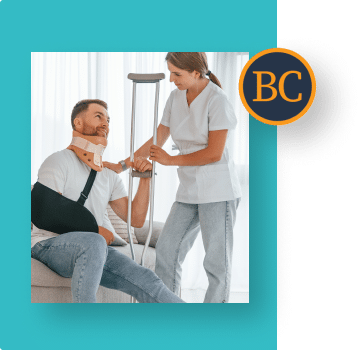
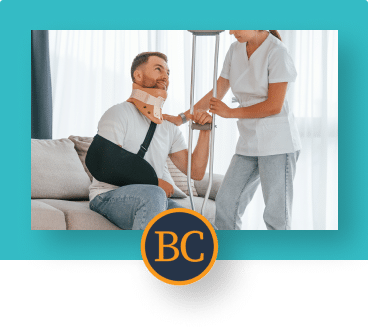
Were you injured in an accident due to someone else’s negligence? Get legal help from the most effective injury law firm in the Midwest.
Proving Liability After a Slip and Fall
One of the most challenging aspects of a slip and fall case is proving lability. It must be proven that the property owner was legally responsible for the unsafe condition that caused your injury. When speaking of liability, there are 3 major factors in play.
Step 1: Duty – This refers to the obligation of the property owner to keep the property and premises safe.
Step 2: Notice – This means that the property owner should have known of the defect at the property. Beyond that, the owner should have acted to repair the defect or warn about the defect to try to deter traffic through the area. This could be as simple as placing a sign or barricade until the proper repair could be made.
Step 3: Causation – Finally, it must be proven that the hazard caused the injury.
Imagine for a moment that you are walking your pet on the sidewalk. Suddenly, your foot lands on a piece of broken concrete, causing you to lose your balance and fall to the side, sustaining a hip fracture. In this case, for liability to be proven, we would need to determine who is responsible for the maintenance of the sidewalk. Secondly, were there any signs or warnings that the concrete was broken and you should have stayed away from that area? Lastly, the concrete would have to be mobile enough that it caused your footing to become unstable?
Depending on the injury that is sustained, it may not be possible to observe all of surroundings immediately, as your mental capacity may be diminished. But, if possible, take pictures of the hazard that caused the fall. Also take scene pictures which would show warnings, or lack of warnings, of the hazard. As many slip and fall hazards are not permanent structures (cords, cables), it can be difficult to prove that the hazard was where you state it was.
Also, if you are able, get the names of witnesses that may have seen the fall. Be sure to explain as much as possible to emergency medical services about the fall itself. Your mind is sharpest immediately following an injury, and will fade over time. The more you can document immediately, the stronger the chance of proving liability in a case.
Step 4: Determine if you’re eligible to recover compensation – As soon as you are able, it is imperative that you reach out to Brown & Crouppen for a consultation. There are numerous factors that will weigh in on your overall potential for compensation. Brown & Crouppen will analyze all aspects of the case, seek the responsible parties, and ensure that you have someone in your corner fighting for you against those who are at fault.
While some people will try to negotiate compensation packages on their own, having the knowledge, experience and dedication of an established law firm will ensure that your compensation package is fair and reasonable. Our number one priority is making sure that you have the time to heal properly from the injury and have the peace of mind knowing we are fighting for you on the legal side, and calculating every aspect of recoverable damages.
Note: The average slip and fall settlement is usually between $10K and $50K, but may be lower or higher depending on the unique circumstances of your case.
Determine If You’re Eligible To Recover Compensation
As soon as you are able, it is imperative that you reach out to Brown & Crouppen for a consultation. There are numerous factors that will weigh in on your overall potential for compensation. Our slip and fall attorneys will analyze all aspects of the case, seek the responsible parties, and ensure that you have someone in your corner fighting for you against those who are at fault.
While some people will try to negotiate compensation packages on their own, having the knowledge, experience and dedication of an established law firm will ensure that your compensation package is fair and reasonable. Our number one priority is making sure that you have the time to heal properly from the injury and have the peace of mind knowing we are fighting for you on the legal side.
Getting started with your slip and fall case is easy. You can call us at 888-802-8156for a free consultation, or tell us about your case with our free case evaluation form. And remember, there’s no upfront cost to you — if you don’t get paid, we don’t get paid.

